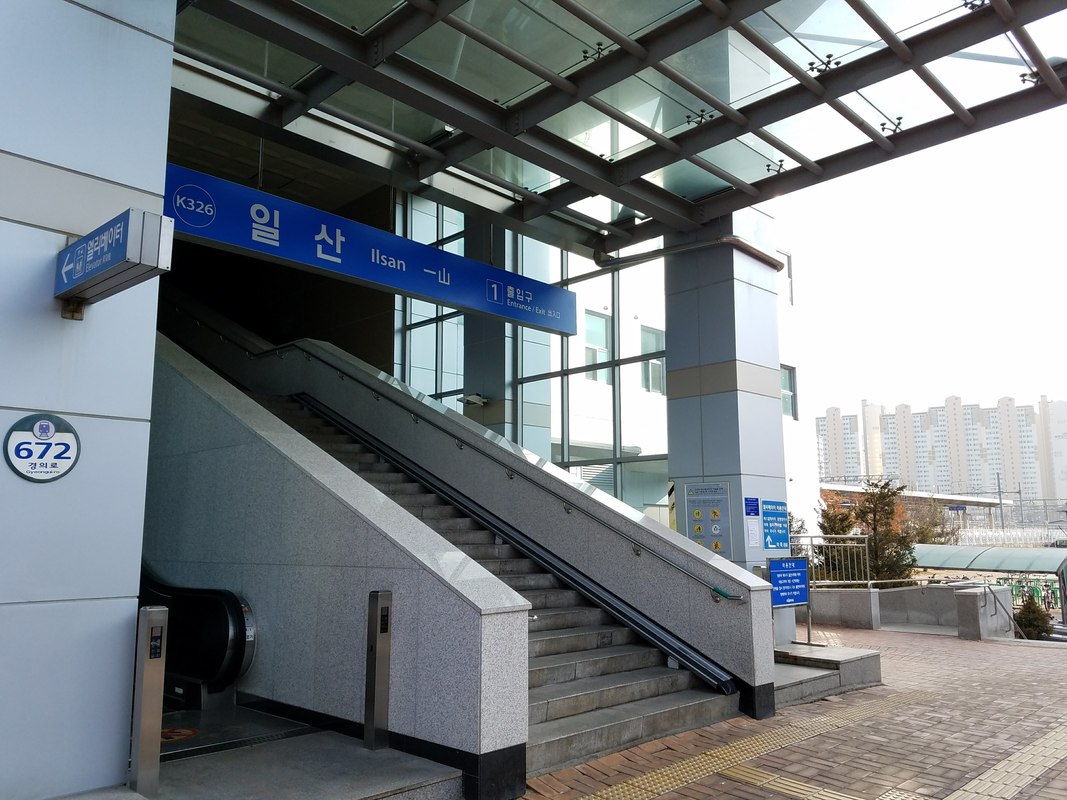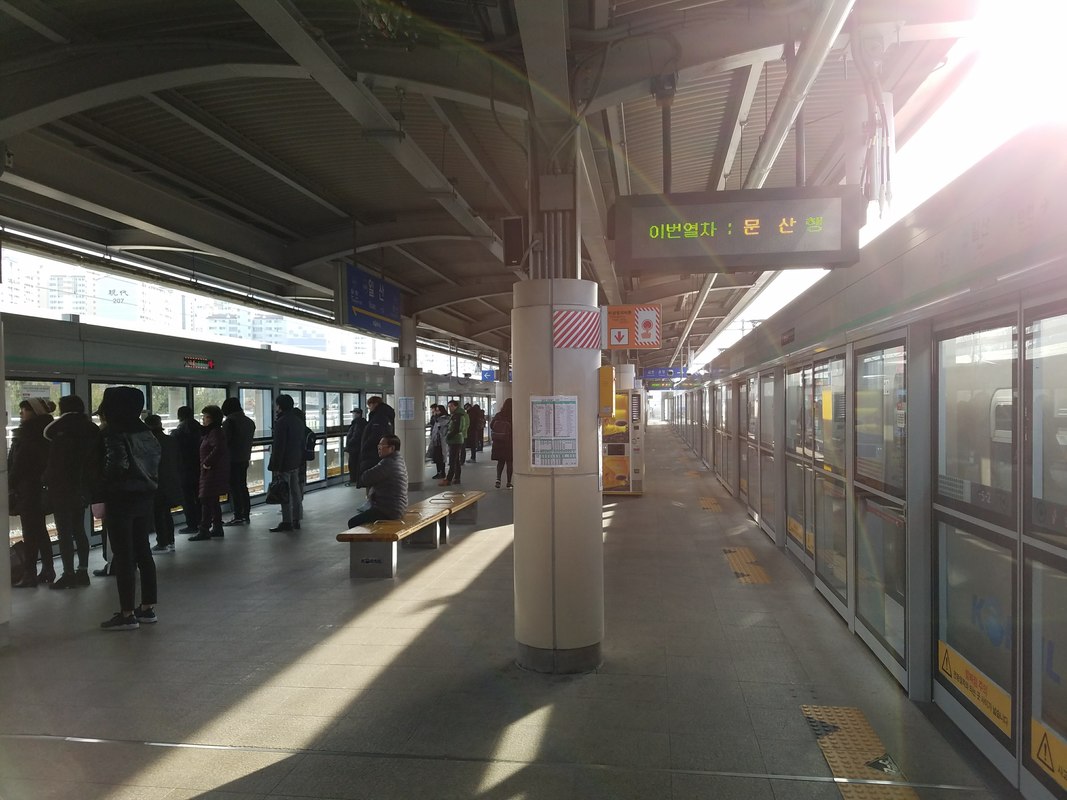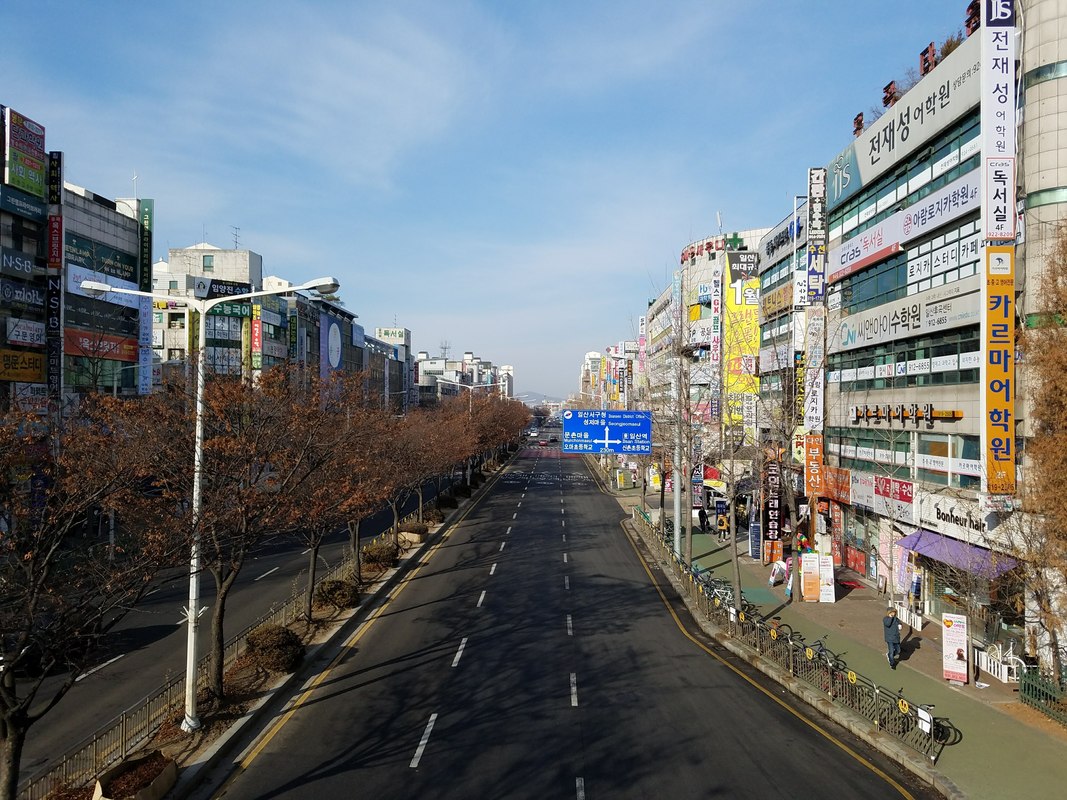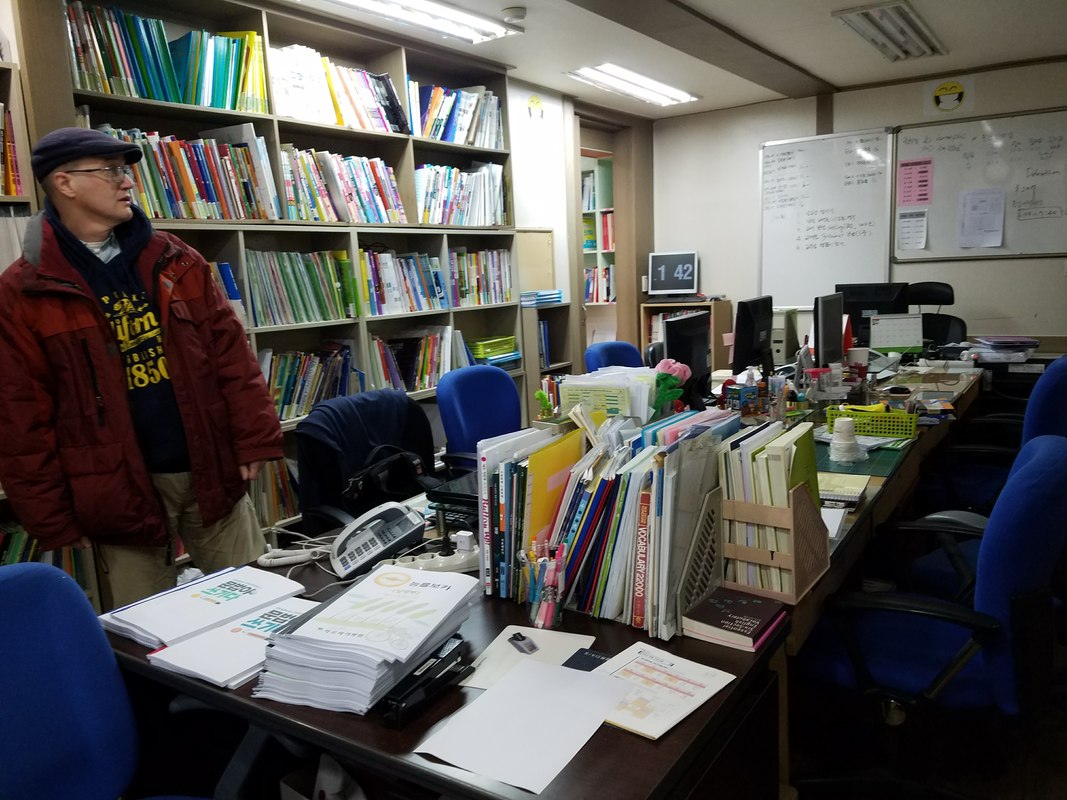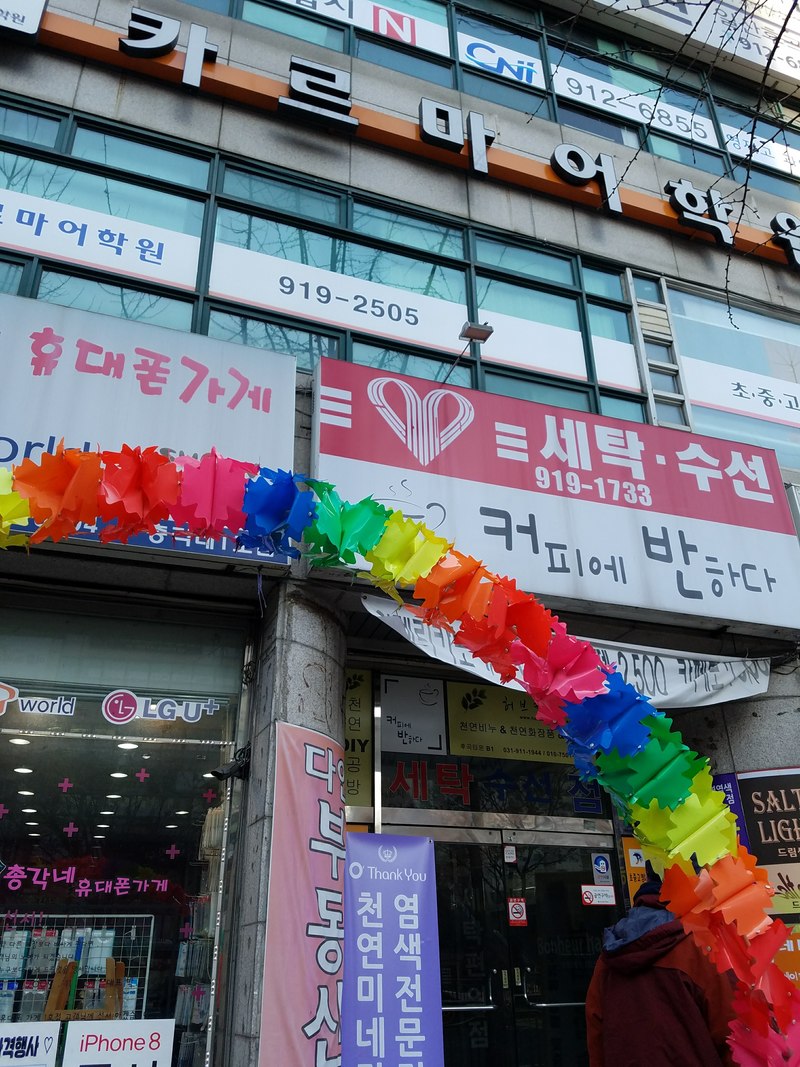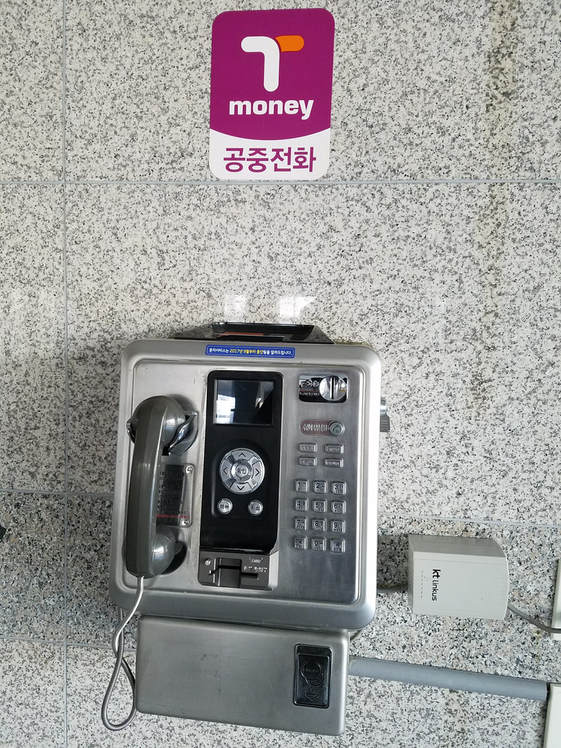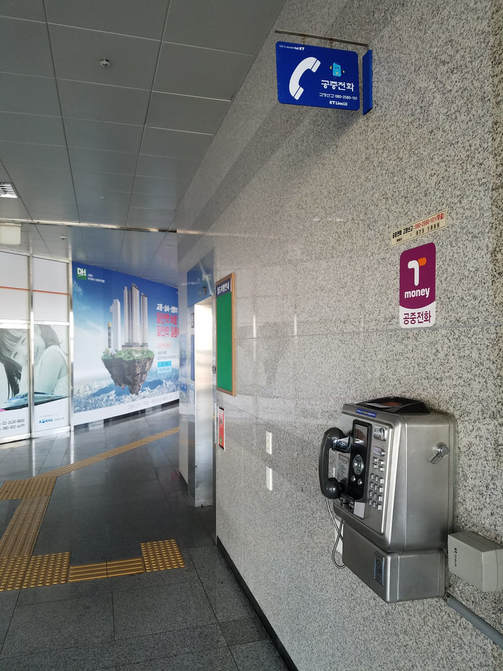What is Ilsan? It lies along one of the easiest avenues of approach from the DMZ south towards Seoul. It was my home for one year, 2009-2010. It is a place I still return to an average of around once a year. Many of these times are to visit my friend Jared, who has now lived in Korea ten years, almost all of that in Ilsan.
Some things about the Ilsan I knew are gone, never to return except in reminiscence. My former employer, disappeared. As far as I know, they are now running a business in Koreatown, Los Angeles. The American “burger” restaurant with the comically long name, long gone. The group of foreigners that seemed invincible to me when I first arrived, including Basil and Hannah, both of whom are not likely to ever return to Korea, much less Ilsan. There is also now a Mormon Church partially blocking the view of my old home. (I have often run into White Mormons in Korea, ex-missionaries. One of them [in his case an ex-Mormon but all the same a former missionary in Korea] is actually a Korea Studies student with me now in the USA. I don’t recall ever having met a Korean Mormon.)
Forgive the extraneous content above. The purpose of this post is to determine “which mountain” once and for all. Ilsan, you see, means “One Mountain” in Chinese, represented by the remarkably simple and intuitive Chinese characters of “一山.” So which mountain is that ‘one’ mountain? This is not as simple a question as it seems.
I would note first of all that “il san” is not how Koreans would say “one mountain;” They would say either “Han San” or most likely “San Hana” [한 산; 산 하나]. Chinese numbers (“il” for one) are not used for counting objects in the Korean I know. Perhaps they were a century ago when Ilsan apparently got its name. (There remains a certain arbitrariness to when Korean numbers are to be used and when Chinese numbers are to be used which still trips up even advanced students of Korean.
Ilsan Train Station, which is near the old Ilsan and has been a train station for over a century, must offer a clue. I was there to visit Jared this past time, as he works nearby (I didn’t work or live nearby in my year there; Ilsan is today much bigger and I lived miles away).
If you are coming from Seoul and do not get off at Ilsan Station but continue northward, in another 24 minutes you must get off as you have arrived at the present day’s northernmost accessible train station on this line, Munsan (문산역) (at 38.85 degrees north [location]). Below you see a scattering of people waiting to board a Seoul-bound train. I had just gotten off the northbound (Munsan-bound) train, boarding on the right.
Seoul-to-Ilsan: 36 mins (1,650 KRW, or $1.50 USD)
Ilsan-to-Munsan: 24 mins
Seoul-to-Munsan: 60 minutes (2,050 KRW, or $1.90 USD)
I wonder if it was deliberately planned that the Seoul-to-Munsan duration would be 60 minutes, a round and thus symbolic figure, as if to say: “From the heart of Seoul, to the DMZ in an hour (exactly).”
There is actually one more station north of Munsan, called Dorasan (38.90 degrees north) [location], just a few miles from the Kaesong Industrial Zone inside North Korea. Dorasan, being right along the DMZ, is not regularly accessible. If the DMZ ever opens to traffic, Seoul-to-Kaesong through Munsan and Dorasan would seem to be about 85 minutes, and that is by slow/cheap train.
Here is the street on which Jared has worked most of ten years (I worked on the same street actually, but a few miles south). This is a few minutes’ walk from the station and the road is, according to Jared, a very old one. If we can “one mountain” from here, that would be a good lead. You’ll notice that there is, in fact, a mountain in the distance (there rarely isn’t in Korea). More on that later.
Jared’s interesting life story includes a stint in his youth in the U.S. Army, stationed just north of Ilsan circa 1990 and 1991. He often says he hated the army but was glad he did it anyway, and lucked out with an honorable early-release with downsizing after the USSR collapsed. Jared recalls an Ilsan of dirt roads and dilapidated shacks (well I made that up, but it fits my mental picture). Rural idyll with the occasional army vehicle racing along the dirt road. (I understand that the South Korean 9th “White Horse” Division [9사단 “백마”] is (still) today stationed near Ilsan. In one year I don’t recall ever seeing anything suggesting a military presence in or near Ilsan, except that the name of the Gyeonghui train station nearest to my own workplace of the time was called Baengma, or White Horse. I didn’t realize this connection until years later, though.)
I lived in Ilsan for just over one year, a long time ago now, 2009 and 2010. Before the Smartphone Age. I knew very little about Korea at the time and had no money. My first two months in Ilsan were with no cell phone at all, I recall, partly because I had problems legally making a contract as a foreigner (without an Alien Registration Card), partly because I felt I didn’t need one. This is a good example of how “the Ilsan I knew” was one from which I was pretty disconnected, actually.
I really walked into something completely unknown in 2009, showing up in Ilsan. One benefit of somehow ending up in a completely foreign place, though, is that “everything is new,” which lends itself to an intellectual excitement (for some of us), namely being able to ask a child’s questions with an adult’s mind. (After several more subsequent non-consecutive years in Korea since, the foreignness is still there, but the newness is not. While I know much more, many good questions remain but go unnoticed, unasked, and unexplored.)
After talking a while in the coffeeshop, Friday late morning, full of adjummas and almost no men at all, we stopped by Jared’s employer, and English institute the name of which is a common term in Buddhist theology. I knew the owner a little from visits over the years. He was a KATUSA, a Korean embedded with the U.S. Army due to language skill.
I taught 5th through 9th graders, and the youngest are now college age. I later did that full-time two more years elsewhere (Bucheon), as (I thought) the money was good.
The Friday I visited Jared I had a curious phone problem, myself, though not as bad as the one that would befall me two weeks later (the theft of my phone at Texas Street, Busan, with large loss of data and psychological loss that the 2009-Me who went two months with no phone at all would be puzzled at). The phone problem on the Ilsan day was that I had no Korean SIM card at the time on this visit, and I had a guy making business cards for me who told me to call him at a certain time. There are hardly any public phones any more, of course. Jared offered me to call from his work phone, but I declined, with the original intent to find my old workplace. For some reason that didn’t happen, and as I realized time was running out I just went back to Ilsan Station, which did have a public phone.
I called the business card guy, inquired if the batch was done: he said it was. I went down to Euljiro, Seoul, to pick the batch up before he closed for the weekend. I am embarrassed to admit that I couldn’t really figure out how to use the payphone. (I can’t be the only one in the late 2010s like this.) It took a few minutes to get it to work.
In the meantime, I had seen no other mountains except the one Jared pointed out in the distance in this picture.
Back to the main question, which has bugged me for years. I intend to not rest until I come up with a substantive answer.
Q. If Ilsan means “One Mountain” (it does), which mountain is it?
There are three candidates:
(1) Jeongbalsan (정발산), a small hill in the center of today’s Ilsan New City (the least likely because of how insignificant it is; but I have heard residents of Ilsan propose this, possibly including former coworkers, though my memory is fuzzy);
(2) Shimhak Mountain (심학산) (183.5 m) [location], 7km NW, as the crow flies, from Ilsan Station. This is the one directly visible in the distance in the photo above, a little to the left of the road;
(3) Gobong Mountain [location]. Gobong Mountain (which I have hiked on, has ample traces of military activity/exercises: ditches, trenches, reinforced circular pits for, I presume, artillery), is 2km NE of Ilsan Station but not really visible from present-day Ilsan, all the development of which is on the west side of the tracks. If Gobong is the titular ‘one’ mountain of Ilsan, it is ironic in that it is not visible to 90%, 95% of present-day Ilsan residents.
Jared believes that the ‘one mountain’ must refer to the mountain visible from the road, Shimhak Mountain. The present-day road has existed for a very long time in some form, a dirt road until the early 1990s. The old village of Ilsan was in the vicinity and so the clear view of this solitary mountain lends itself to the name ‘one mountain,’ Jared says, which sounds plausible. I have also heard him speculate over the years that Ilsan may have been named arbitrarily by the railroad to give some name to a proposed station.
Going a little into Korean Wikipedia, I see this partially or wholly confirmed as follows:
“일산동의 본래 이름은 본래 와야촌(瓦野村) 마을이다. 이곳 ‘일산’이란 이름이 처음 등장하는 것은 일제시대로 일본인들이 경의선 철도를 만들고 이곳에 기차역을 설치하면서 인근의 한산마을 이름을 ‘일산’으로 바꾸면서 사용한 것으로 알려져 있다. 이외에 일산은 이 지역의 고유한 이름으로 이곳에 고봉산과 같이 큰산이 하나밖에 없어 일산이라 부르고 있다는 유래설도 전해온다.”
My Translation:
“Ilsan District’s original name was Waya Village. It was first named ‘Ilsan’ during the Japanese period during the construction of the Gyeongui Line, when the Japanese erected a train station in the area. At this time, the Japanese renamed Hansan village ‘Ilsan.’ A common belief further has it that the name was applied because other than Gobong Mountain (고봉산), there is no other large mountain in the area.”
I am left with two questions: (1) The entry specifies that it is commonly believed (유래설도) that Gobong is the mountain. Does that means no one really knows? What evidence is there for it being Gobong except conjecture(2) Which is more plausible: That the Japanese renamed an existing ‘Hansan’ to the sinified ‘Ilsan’ (Han and Il both mean ‘one’), or did some Japanese railroadmen create the name outright and this ‘Hansan’ originally coexisted with ‘Ilsan’ before the Japanese imposed a sinified uniformity at some later time? There is no record I can see of any “一山” (Hansan or Ilsan) on a late-1800s map of the area, but then there are no small village designations. Perhaps after all this effort I am no closer to a definitive answer.
Now I find that a Mr. Choi Jae-Yong endorses the Hansan–>Ilsan and Gobong Mountain arguments in a 2015 book, “In Search of the History of Our Land through History and Etymology” (역사와 어원으로 찾아가는 우리 땅 이야기). (The relevant excerpt in Korean is here.)
Choi says that the place was also called 한뫼, hanmweh, the latter character (as far as I know) an extinct Korean word for mountain. He adds the surprising twist that this ‘Han’ we are dealing with did not mean ‘One’! The Chinese character used for the name was a different Han, which he says, in a complicated explanation, can here mean ‘great,’ or ‘big/high,’ which would fit because Gobong itself means high mountain. Choi says that the Japanese changed the name in 1914.
How could the Japanese, who could then, and still can, read Chinese characters and take pride therein, get the intended meaning-according-to-the-Chinese-characters wrong? They changed it from ‘high mountain’ (Hansan 韓山) to ‘one mountain’ (Hansan [一山] in Korean; Ilsan [also 一山], sinicized)?
I would propose the following as the most likely explanation: The Japanese railroad promotion man in charge of naming the station, or the low-level Japanese government official, or whoever it was who was in charge of sinicizing place names in 1914, understood spoken Korean. He either heard the name orally only (hearing “han san,” it is only natural he thought it would mean “one mountain” rather than the other, obscure, Chinese-origin Han discussed at confusing length by Choi above), perhaps because the only Koreans on hand when he inquired about the local village name were illiterate. It was a deeply rural area at the time, after all. Thus the name was transformed.
So it was that one Japanese railroad man’s or bureaucrat’s misunderstanding a century ago stuck the place with the goofy name ‘One Mountain’! Let this be a lesson: As some Korean teachers are wont to tell you, “Always check the Hanja” (Chinese character).

